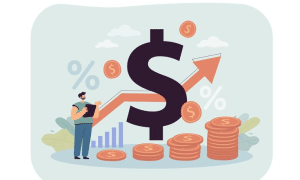Are you considering refinancing your mortgage? Whether you’re aiming to lower monthly payments or tap into home equity, knowing the ins and outs of this process can save you time and money. A mortgage refi, as it’s often called, involves replacing your existing home loan with a new one, ideally at more favorable terms.
In this blog post, we’ll cover everything you need to know about refinancing mortgages in America. By the end, you’ll be better equipped to decide if this financial move is the right one for you.
Understanding mortgage refinancing
Mortgage refinancing is essentially taking out a new loan to pay off an existing one. This is a popular step for homeowners looking to achieve better interest rates, alter their loan term, or switch from an adjustable-rate to a fixed-rate mortgage.
The ultimate goal of a refi is to benefit the borrower, either through reduced payments or by accessing home equity for other expenses such as home improvements or debt consolidation.
There are two main types of mortgage refis: rate-and-term and cash-out. Rate-and-term refinancing focuses on changing the interest rate or loan term without increasing the loan balance. On the other hand, a cash-out refi allows homeowners to borrow more than they owe, providing extra funds that can be used as needed.
Understanding these types will help you identify which option aligns best with your financial goals and current situation. Knowing your objectives is crucial when discussing options with potential lenders.
Rate-and-term refinancing
Rate-and-term refinancing is designed to either lower your interest rate, alter your loan term, or both. Lowering your interest rate can significantly reduce the amount of interest paid over the life of the loan, translating to lower monthly payments.
Additionally, switching from a 30-year mortgage to a 15-year mortgage can help you pay off home debt faster but might raise monthly payments. For those dealing with fluctuating interest rates due to adjustable-rate mortgages (ARMs), a fixed-rate mortgage refi can offer the stability of consistent payments.
This is particularly beneficial if market trends indicate rising interest rates. Factors such as closing costs, credit score, and loan-to-value ratio play a vital role in determining your eligibility and potential savings. It’s wise to weigh these aspects carefully before proceeding.
Cash-out refinancing
Cash-out refinancing allows homeowners to borrow more than what they owe on their current loan. The difference is paid out in cash and can be used for various purposes, including major home renovations, paying off high-interest debt, or funding significant life events like education or medical expenses.
While this type of refinancing provides immediate liquidity, it’s essential to understand the risks, such as increased monthly payments and extended loan terms. Using the additional funds wisely can mitigate these risks and result in long-term financial benefits.
Consulting a financial advisor can help gauge whether this option suits your needs. A detailed cost-benefit analysis will offer clarity on whether a cash-out refi aligns with your financial health.
Preparing for mortgage refinancing
Before diving into the refinancing process, preparation is key. Start by reviewing your credit score, as a higher score can secure better refinancing terms. Lenders scrutinize credit reports to assess your risk profile; hence, it’s advantageous to fix any discrepancies or improve your score if needed.
Next, gather pertinent financial documentation, including tax returns, pay stubs, and bank statements. Lenders require these documents to verify your income and financial stability, facilitating a smoother approval process. You should also reassess your home’s market value due to fluctuating real estate prices.
Equipped with this information, start researching different lenders and their offerings. Comparing interest rates, terms, and closing costs can unearth the best deal for your situation. Online calculators can further help estimate potential savings and payment adjustments.
Steps to take before refinancing
Making informed decisions is vital before committing to refinancing. Begin by defining your financial goals—whether it’s reducing the monthly mortgage payment, shortening the loan term, or accessing additional cash. Your objectives will influence the type of refinancing you pursue.
Create a financial plan that accounts for any potential fees, such as closing costs. These can range from 2% to 6% of the loan amount. Analyzing the break-even point, where your savings equal your refinancing costs, provides insight into the financial viability of the move.
Closing the refinance
Once you’ve chosen a lender and loan, the closing process begins. This involves verifying your financial documents, undergoing a home appraisal, and completing the final paperwork. Expect this stage to take between 30 to 45 days.
During closing, you’ll need to revisit the loan’s terms to ensure no unexpected changes have occurred. Signing the final documents usually requires a closing fee, so be prepared for this immediate out-of-pocket expense.
After closing, your new loan replaces the old one, and you start making payments according to the new terms. If done correctly, refinancing can lead to substantial financial savings and a more manageable mortgage structure.
Refinancing your mortgage can be a complex but rewarding process when approached with the right knowledge and preparation. By understanding the different types, knowing how to prep properly, and following through with the necessary steps, you can make the best financial choice for your unique situation.







